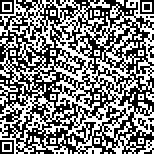| 引用本文: | 刘琳,刘京,肖荣波,李智山,饶峻荃,陈昕.控规阶段的城区热环境评估分析软件[J].哈尔滨工业大学学报,2017,49(2):92.DOI:10.11918/j.issn.0367-6234.2017.02.015 |
| LIU Lin,LIU Jing,XIAO Rongbo,LI Zhishan,RAO Junquan,CHEN Xin.Evaluation software for the urban regional thermal environmental analysis for regulatory planning[J].Journal of Harbin Institute of Technology,2017,49(2):92.DOI:10.11918/j.issn.0367-6234.2017.02.015 |
|
| 本文已被:浏览 2329次 下载 1669次 |

码上扫一扫! |
|
|
| 控规阶段的城区热环境评估分析软件 |
|
刘琳1,刘京1,2,肖荣波3,李智山3,饶峻荃1,陈昕1
|
|
(1.哈尔滨工业大学 市政环境工程学院,哈尔滨 150090;2. 城市水资源与水环境国家重点实验室(哈尔滨工业大学), 哈尔滨 150090;3. 广东省环境科学研究院,广州 510045)
|
|
| 摘要: |
| 针对城市规划中的控制性详细规划阶段,将影响热环境的控规参数进行分类,并选用新标准有效温度、湿黑球温度、热岛强度作为热环境评估指标.在城市区域热气候预测模型的基础上,采用单因子变量的方法分析各控规参数对评估指标的影响,得到各评估指标的逐时简化计算模型,并与原计算模型进行对比验证.结果显示简化模型更为简便快速,具有较高的计算精度,并极大提高了运算速度.通过将数据导入、数据维护、图形展示、数据导出等模块与简化计算模型进行耦合,开发了城市控制性详细规划热环境评估软件,并对广州规划区域进行实例应用,得到4个测试地块的逐时热环境指标值(OUT-SET*、UHII和WBGT),并实现各参数的界面图形可视化.结果分析显示研究区域整体的OUT-SET*平均值分布在28~30.5 ℃,WBGT的最大值分布在29~30 ℃,地块1~3的UHII在0.4~1.2 ℃,而地块4则出现局地冷岛效应.不同地块的控规参数设置对热环境指标的分布有重要影响.
|
| 关键词: 城市规划 热环境评估 数值试验 热岛强度 热舒适 |
| DOI:10.11918/j.issn.0367-6234.2017.02.015 |
| 分类号:TU14 |
| 文献标识码:A |
| 基金项目:“十二五”国家科技支撑计划项目(2012BAC13B01); 广州市科学研究专项(2014J100112) |
|
| Evaluation software for the urban regional thermal environmental analysis for regulatory planning |
|
LIU Lin1, LIU Jing1,2, XIAO Rongbo3, LI Zhishan3, RAO Junquan1,CHEN Xin1
|
|
(1.School of Municipal and Environmental Engineering, Harbin Institute of Technology, Harbin 150090, China; 2.State Key Laboratory of Urban Water Resource and Environment (Harbin Institute of Technology), Harbin 150090, China; 3.Guangdong Provincial Academy of Environmental Science, Guangzhou 510045, China)
|
| Abstract: |
| At the regulatory detailed planning stage, the regulatory planning parameters which influenced thermal environment were classified and the new standard effective temperature, wet bulb globe temperature, urban heat island intensity were all considered as the thermal environmental evaluation index. Based on the developed urban regional thermal climatic prediction model, one-variable method was adopted to analyze the effects of different regulatory planning parameters on these evaluation index. The hourly simplified models of each evaluation index were obtained and showed rapid, simple, and accurate characteristics by comparing with the original model. By combining the data input module, the meteorological parameter maintenance module, the regulatory planning parameter maintenance module, graph presentation module, data output module and the hourly simplified calculation models of evaluation index, the thermal environmental evaluation software for urban detailed regulatory plan was developed and then applied to a field study in Guangzhou. Hourly thermal environmental indicators OUT-SET*, UHII, and WBGT of four test blocks were obtained and the spatial visualizations were realized. Results showed that the average OUT-SET* within the whole research regions ranged from 28 ℃ to 30.5 ℃, and the maximum WBGT varied between 29 ℃ and 30 ℃. The UHII of block 1 to 3 varied between 0.4 ℃ and 1.2 ℃ while that of block 4 had the urban cool island effects. Thus, it reveals that different regulatory detailed planning indicators have important impacts on the thermal environmental parameters.
|
| Key words: urban planning thermal environmental evaluation numerical experiment urban heat island intensity thermal comfort |







